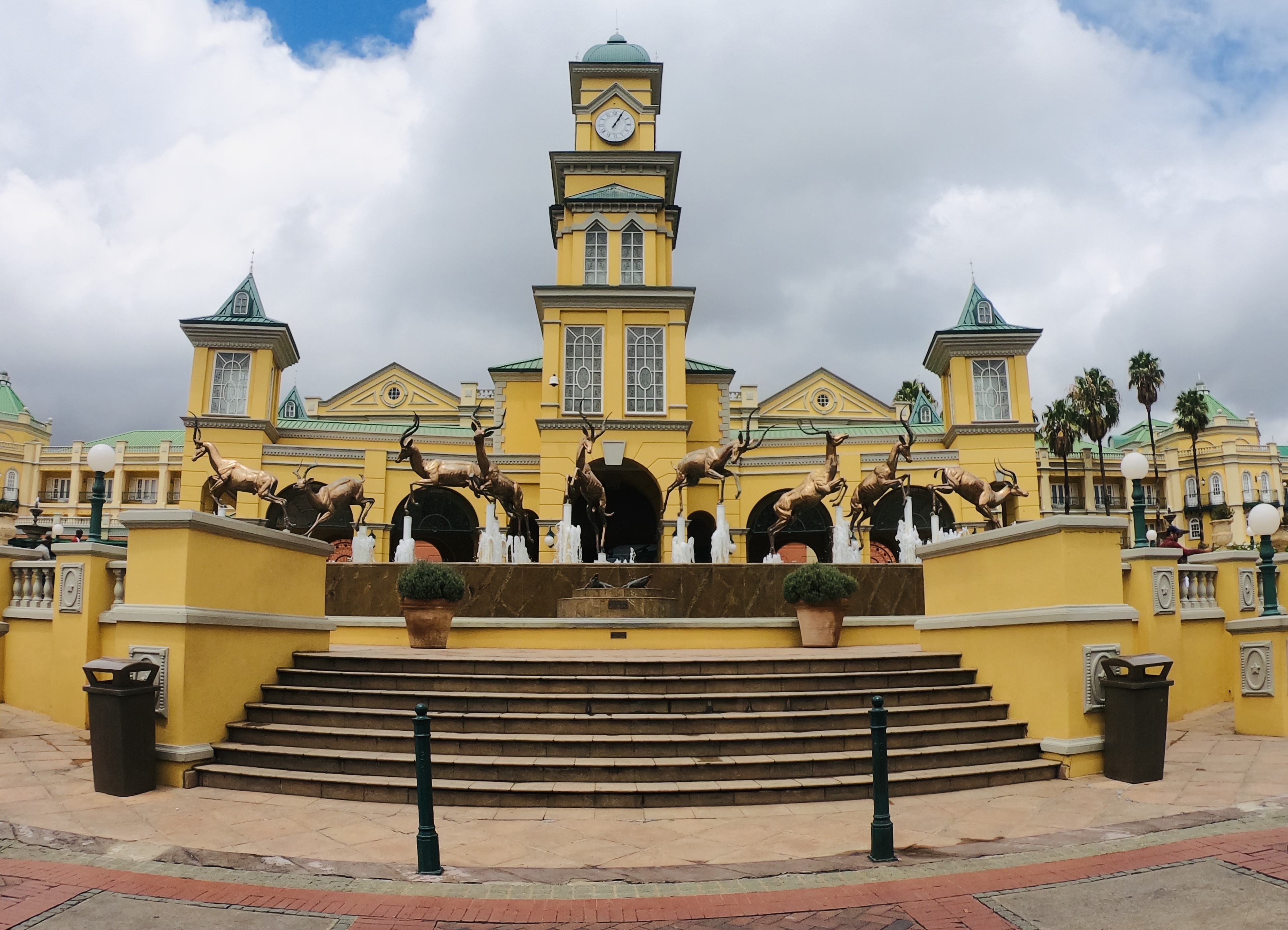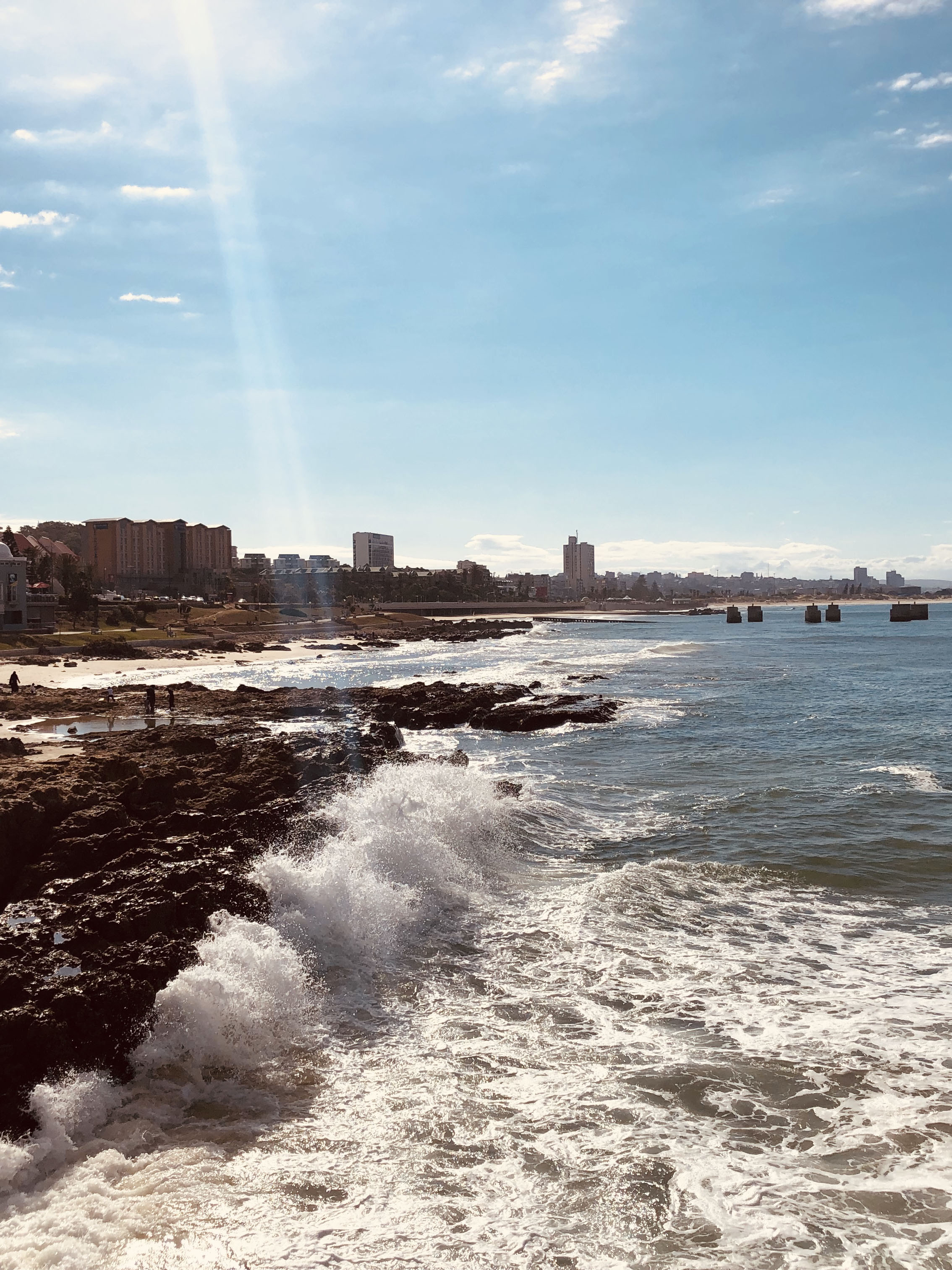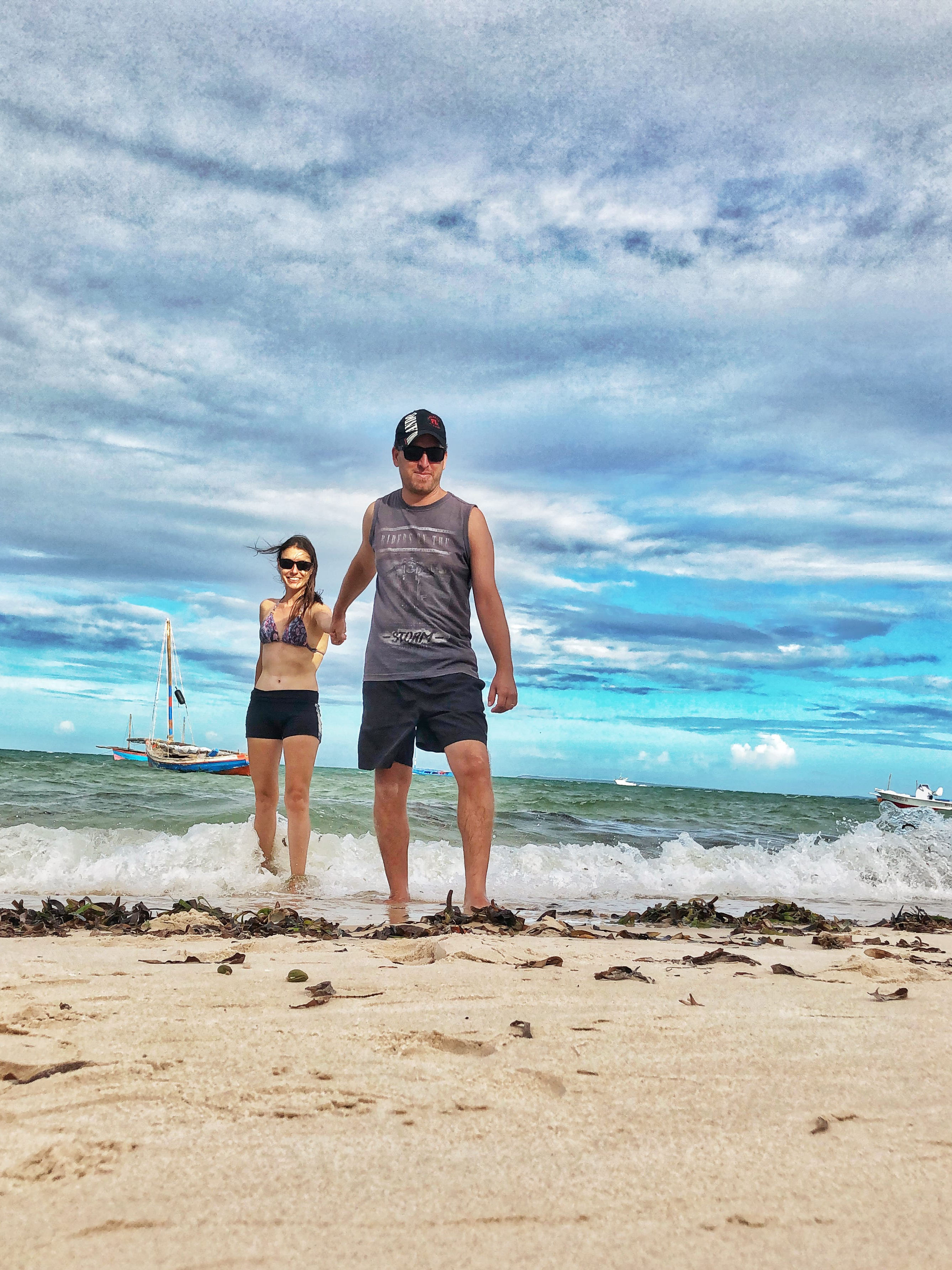
Johannesburg was the last city we visited in South Africa. It has almost 5 million habitants, the biggest industrial and commercial pole in the country, among its local culture.
As soon as we got to the bus station, we could identify people coming from several places, and when we left the station, it got clearer. We were in downtown, it was totally crazy (it even reminds São Paulo).
In general, tourists do the stopover there, our safari tours. The city is not so touristic, but while we stayed there, we took a glimpse of its grand architecture, visited the zoo in the middle of the city, got in touch with the local culture and visited the several museums that tell the history of the past that marked its population.
We used Citysightseeing to take all the tour, as it passes by all of the touristic attractions spread by the city, and also because the transfer from one place to another is safer. We took the one-day tour, the price was 60 reais each person, and we walked by a lot of touristic attractions.
Rosebank
Rosebank is the departure point of the bus, which takes us to a tour around the city. The company is Citysightseeing, and there’s a point of sale of tickets to the tour, and a lot of stores, markets and a shopping, where you can have breakfast while you hold on the bus departure at 9:00am and have dinner when returning and explore the place. It’s super safe, as there are security guards in every entrance hall.

View of Rosebank

Rosebank Square
Zoo lake
The first stop is that lake across the zoo, where you can stop to take beautiful photos, take a paddle boats ride, and it has an open area in the middle of the lake where it’s possible to get off and walk until the zoo, which is quite near.
Zoo
You have to pay the admission fee, which is R81.00 (10 reais), to access it. It takes over 02 hours to visit calmly the whole zoo, so if you hire the bus for only one single day, be attentive to the hour, as you may not be able to take all the tour. The streets are very wide and you can see a lot of workers, looking after the animals all the time.
The place where the animals stay is very different of what we’ve already seen, as the grids are very short outside, and it seems they will jump and leave at any time. We can’t deny we got cold feet near the rhinoceros, but don’t worry, there’s a shell inside the cage that stops them to go away. There are a lot of amazing species, and each one has a distinct beauty.

Entrance Hall of the Zoo

Rhinoceros of the Zoo
Constitution Hill
That place has much history to be told, it’s an old prison and a military fort, where a lot of common people known all over the world and even children were imprisoned and, nowadays, it’s a museum with over 200 artworks and the constitutional court of the country, where the South Africans rights are endorsed. It’s also the stop point of the bus, where we switched from the green line to the white one.

Switch of Buses
Mining District
We passed by the district by bus. It has a lot of history and artworks, about the time of gold mining, and that’s where the offices and some of the biggest miners in the world and the chamber of mines of South Africa are located. At the standard bank, there’s a museum with artworks about the mines and, in the 80’s, the bank opened an entrance of one mine and it can be visited from inside the building.
Carlton Centre
We visited that 50-level building, where we can have a broad view of the city. After getting off the bus, there’s a guide which takes you to purchase the R30 ticket (8 reais) and then conducts you to the top. He gives you about 15 minutes to visit it, enough time to take photos and enjoy the view of the city. Soon after, he returns with the group until the bus stop again, for the people to be safe and not to get lost.

Carlton Centre

View of Carlton Centre
Gold Reef City
We also stopped there to take some photos and have lunch. That compound has restaurants, hotels, casinos and an amusement park, with the golden race theme, for being located in an old mine, where you can visit aside.

Entrance of Gold Reef

Tami and the Ferris Wheel
Museum apartheid
Who is in Gold Reef and doesn’t want to wait for the tour bus to go to the museum can go on foot, because it’s rather close.
In that museum, we found the historical facts that took place between 1948 and 1994, the stormiest period of the country, when white people, the minority which held the government then, were afraid to lose the power they had achieved and started to decrease black people’s rights and segregate them. We should know about the history of the fight for liberty and equality of that people.

Tickets Museum Apartheid

Entrance Hall of the Museum Apartheid
SAB world of beer
For who enjoys beers, or wants to know more about its process, here’s a special place to visit and to learn more about the origin of beer in that city. The price of the tour is R125, tasting is R115 and the both of us is R195.

Factory SAB

Entrance Hall of SAB world
Braanfontein
It’s a district where we passed by bus, next to the end of the tour. It’s a central suburb in Johannesburg, with a lot of buildings and huge paints. There are a lot of pubs nearby, restaurants, cafés and also the neighbourgoods fair, open every Saturday.


Intercape
It’s the local bus station, where you can find the ranges among next cities. We’re going to use that means of transportation a lot and we referred to three companies: Eldos Coaches, Intercape and Greyhound. They all have fairly affordable prices.
We dealt with Intercape from Port Elizabeth to Johannesburg, and the price was 172 reais for the couple. The bus is comfortable, clean and organized, and has air-conditioned as well. In Africa, we used those three companies to move out from one city to another and liked the service very much. By the way, the buses of Intercape are made in Brazil, by the company Marcopolo.
Means of Transportation
The bus system is not that good, and you pay for the range you take. You can use it if you are not in a hurry, it costs R15.00 (3.50 reais) in the station and in the stop where you need to buy to take the trip.
Uber works very well, we took some rides and everything worked out. It has a standard price for Uber. There are also taxis, and, like in Brazil, they’re kind of rivals.
Safety of the City
During the time we stayed there, we already saw that the city is not safe, mainly in downtown. We had researched on sites some information that the city is dangerous for tourists to walk freely. We could identify few cops in the streets. In general, there are security guards in touristic attractions. In that case, we chose to take the tours with an agency, Citysightseeing, and as we are a couple, we didn’t stay in the street after 8:00pm, we went to a close pub at most, and we took the tours during the daytime. We didn’t feel at risk, but we are always attentive.
Kind of Currency
The local currency of Africa is ZAR (rands), and the exchange in dollar for February/2019 is $1.00 to ZAR13.00. We recommend to exchange the currency in a safe place such as an airport or at Exchange, a bank in the city. It’s always good to have the local currency, because they may accept dollar, but you lose in change or conversion.
Expenses in Johannesburg
Our expenses in currency (REAIS) in Johannesburg during 4 days for the couple were the following:
Feeding: R$83.00 (market, snacks and drinks)
Transportation: R$112.00 (Uber)
Tours: R$210.00 (tickets, gifts)
Lodging: R$155.00 (airbnb)



